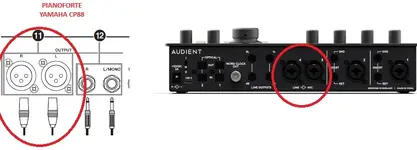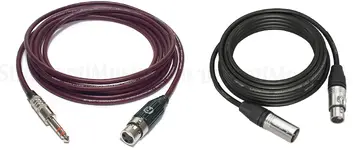I
Ivas
New member
I ask for advice on the audio cable for the best connection between the instrument (CP88) and the sound card (Audient ID44 MKII)
Hello everyone and welcome back! I just signed up to this wonderful forum because I noticed that there are many really expert users!I write from Italy, from Rome and I help myself via Google translator... Sorry for the mistakes please...I have a Yamaha CP88 piano which, in addition to the classic jack audio outputs, also has Cannon XLR outputs. I need to connect it to the Audient ID44 MKII.
The question is this: initially I had connected the CP88 outputs via TS jack (therefore unbalanced) to the Audient. Unfortunately there was a lot of background noise, buzzes ecc. so I tried a balanced cable and the problem was solved.
Since the CP88 also has XLR outputs (in addition to those with TS jack) I would like to purchase the XLR audio cable that comes out of the CP88 and enters the Audient.
I would like to know if I can enter the Audient ID44 (since it has both XLR and TRS combo inputs) via XLR (as is done with microphones) or should I enter with a TRS jack.
Consequently: what is the best solution?
- - female XLR cable -> TRS (from CP88 to Audient)
- - XLR female cable -> XLR male (from CP88 to Audient)
Is this a danger to worry about or could I connect like that too?
I attach photos of the CP88 outputs and the Audient inputs and photos of the 2 cables to choose from


